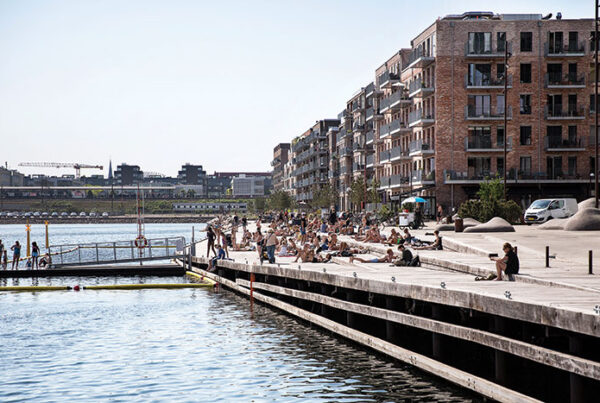In a 2021 ULI Virtual Spring Meeting session, participants from different parts of the United States discussed what it takes for stakeholders to achieve a triple bottom line in real estate development, and what they see in the years ahead for the industry.
Sean Slater, San Diego–based principal of Long Beach, California–based RDC Architecture, Interiors, and Urban Design, moderated the chat and set the scene by noting that last spring, when meeting attendees were in the midst of the Institute’s first virtual national conference, the atmosphere was different.
“In that day, we really felt like the need was to talk about COVID-19. That was all that anyone could think about. The shutdown had just started. We were all very concerned about our staff; we were very concerned about our businesses, very concerned about our bottom lines,” Slater said. “About a week later, the events in Minneapolis with George Floyd happened, and changed that conversation completely.
“In our minds, it really deepened the conversation,” he continued, adding that the conversation about the essence of members’ businesses became a conversation about the essence of the entire industry. One of the results of that discussion last year, Slater noted, was that ULI created diversity, equity, and inclusion (DEI) vice chairs for every product council.
In addition to Slater, panelists included Kevin Rieger, senior vice president for real estate development at AEG; Amy Pokawatana, vice president of development design at Hudson Pacific Properties, and DEI vice chair of ULI’s Entertainment Development Council; Corey Matthews, chief operating officer of Community Coalition; and John Kane, chair and chief executive officer of Kane Realty Corporation.
In discussing ways that developers can conduct community outreach, Kane described his company’s Downtown South project in Raleigh, North Carolina. The development lies in what has been a long-neglected area of that capital city, which has seen significant change and growth over the past 20 years. Last year was a challenge for everyone, he said. “We got the project rezoned during this period, and we normally have lots of neighborhood meetings, and they were all done through Zoom.”
When discussing his firm’s entertainment-oriented projects, Rieger said, “Good design can facilitate a good connection to the community. You want connectivity to the neighborhood.” He added, “We all want to feel safe and secure, and we just want to find a way to do that that’s open and accessible.”
The participants discussed the importance of developing relationships with community organizations, with Rieger mentioning that 20 years ago, when his firm developed L.A. Live, a sports and entertainment complex in Los Angeles, that his company sat down with 30 community organizations over the better part of a year.
Matthews, who said that his organization is a community-based coalition in South Central Los Angeles that helps address the social and economic conditions that can foster addiction, poverty, and crime, added, “With true, deep community engagement, we go beyond the status quo.”
Participants mentioned several items that are being incorporated into real estate developments that are fostering a sense of physical connection to their neighborhoods as well as a connection to the people who live nearby. Such things include negotiating community benefits agreements, providing affordable housing and child care, hiring local residents, and providing living wages and open space.
When Slater asked participants, “have we turned a corner?” Pokawatana said that, in light of last year’s events, people are feeling more empowered to not accept the status quo. Rieger said that the outreach model is broken, and that government cannot be counted on to speak for the community. And Kane said that community engagement cannot only be top of mind, but must be made a priority throughout an organization, throughout developments, and “in everything you do.”
Matthews said, “If I were to give a quick takeaway, I would say let the community speak for itself, ensure that we make it accessible for community members to weigh in, . . . and, long term, [that] viable partnerships between community and government and business are the only way to have a truly triple bottom line.”


